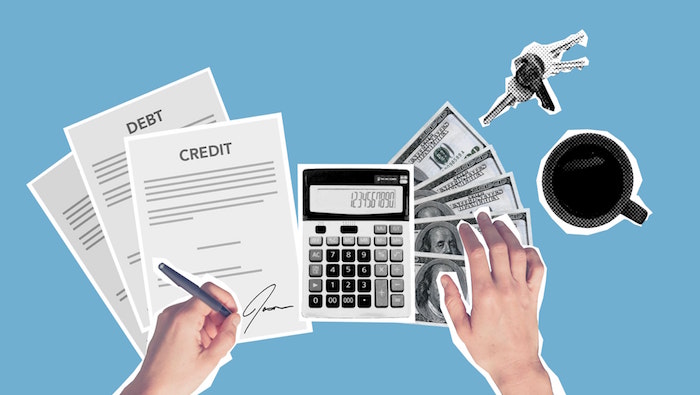If you haven’t heard, the House passed President Joe Biden’s $1.9 trillion stimulus bill, the last step before it goes to his desk to be signed into law. But will this affect you? If so, how? We look to break down the bill in today’s blog.
Main Provisions of the Stimulus Law
So, what’s in the law? Who’s getting paid and will it affect your business? We take a short look at everything from the $16 billion set aside for vaccinations to the other $1.874 trillion of the bill set aside for other things.
According to the Wall Street Journal, the $1.9 trillion is broken down from largest to smallest as follows:
- Stimulus Check: $410 billion will go directly to US citizens, resulting in $1,400 stimulus checks for individuals making less than $75,000 annually and for married couples making less than $150,000 before phasing down.
- Government: The stimulus bill would provide $360 billion to state and local governments, with $10 billion put toward infrastructure projects. What this has to do with COVID is unclear, but this makes up the second-largest portion of the money set aside.
- Unemployment Programs: A healthy amount of money was set aside to support those affected by the lockdowns. $246 billion of the law goes to fund unemployment benefits, providing a $300 weekly jobless aid supplement through Sept. 6. Additionally, Senate Democrats added a new provision to make the first $10,200 of the 2020 benefits nontaxable for households making less than $150,000.
- Education: Designed to help kids get back to school, a fair portion of the funding is meant to facilitate teacher vaccine rollout and renovate schools. The package contains tens of billions of dollars to facilitate the vaccine rollout and $130 billion for schools to help safely reopen through improving ventilation, hiring more janitors and providing more personal protective equipment.
- Expanded Tax Credits: Another part of the bill is going to fund tax credits. The plan would raise the $2,000 Child Tax Credit to $3,000, set the credit at $3,600 for parents of children under age 6 and make parents of 17-year-olds eligible. The plan would also make the credit fully refundable, so that low-income households would get the full benefit, no matter how little they earn. The bill provides a 20% boost in after-tax income to the lowest-earning 20% of households, according to a Tax Policy Center estimate.
- Testing and Vaccinations: Following a huge amount of legwork in the prior bills, the money expected for testing and vaccinations is expected to make up just $123 billion or 7% of the bill. Most of (40%) this money will go to testing and contact tracing, while setting aside $47 billion will go to Disaster Relief Fund and funeral expenses related to Covid-19. Only $16 billion, 0.8 percent of this $1.9 trillion, will go to vaccines.
- Health Insurance and Benefits: Setting aside $106 billion, the stimulus law will provide for additional ACA enrollment, COBRA premium reimbursement, and more. A late addition to the legislation by the Senate would cover 100 percent of the costs of continuing health insurance through September for laid-off workers eligible for so-called COBRA coverage in employer health plans.
- Paid Leave: The bill provides tax credits for employers with fewer than 500 workers to reimburse them for paid leave costs of up to $1,400 per week per worker. The bill does not mandate that employers offer paid leave.
- Businesses: Only $56 billion of the bill is set aside for businesses affected by the lockdowns. Specifically targeting business taxes and restaurants—those most heavily affected by poor policy on the state level, most of this money is going to be put into dismantling provisions of the Tax Cuts and Jobs Act. Companies that work with “third-party” gig workers will be required to report more transactions to the IRS. However, there is one small benefit for small businesses, as the law extends a tax provision from the Republican 2017 tax law that restricts how businesses losses can be carried forward to offset future-year profits through 2026.
- Restaurants: About half of the money for businesses is going to restaurants. The legislation includes $25 billion to help restaurants struggling from pandemic lockdowns and closures and $1.25 billion for venue operators. The bill also includes $15 billion for targeted Economic Injury Disaster Loans and an additional $7.25 billion for forgivable loans in the Paycheck Protection Program.
- Transportation: Allocating $56 billion to help those in the transportation industry, much of this money is going to AMTRAK, while the bill sets aside $14 billion for eligible airlines and $1 billion for contractors to the air carriers to extend a payroll support program set to run out on March 31. The legislation also includes $8 billion for airports to make changes to facilities or personnel to prevent the spread of COVID-19.
In addition to this, a variety of other programs make up about $200 billion of the bill. Nutrition assistance, agriculture, and more will see money, with a 15 percent increase in Supplemental Nutrition Assistance Program extended through September and $4 billion for Black farmers to assist with debt relief.
How Will This Affect You?
Though less was put aside for businesses than ever, we’re wondering how this will affect you. Did your business get any more freedoms from the bill? We’re hoping you discuss this with your peers in our newly launched Controllers Council Slack Channel.
Additional Resources
Year-End in the COVID Era: Understanding the Challenges
Three More Metrics to Look at on Your Road to Recovery
Has the Coronavirus Given Corporate Finance a Taste for Technology?




